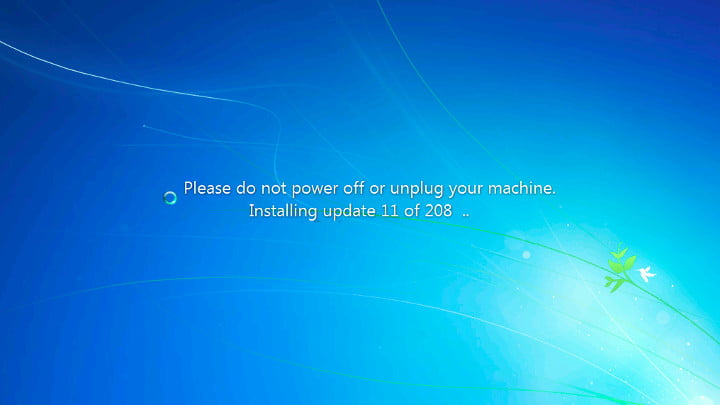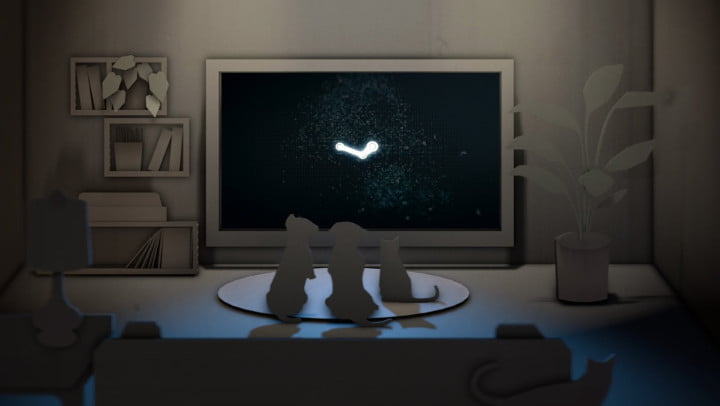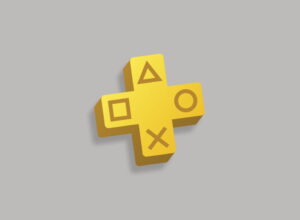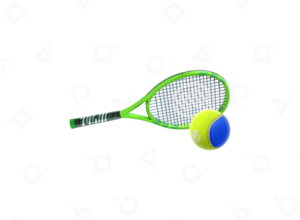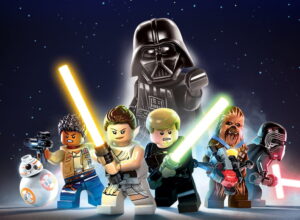Everybody knows that PC is superior, in every department except one: comfort. Desk chairs suck. It’s time to stream PC games to your smart TV instead.
When smart TVs first came out, they were seen as a bit of a novelty. Sure, you can do lots of cool online things with them, but do you really need to? Fast forward a few years and, as the technology improves and prices recede, it’s now practically harder to buy a new telly that isn’t smart. Manufacturers are just bunging a small Android chipset in there as a matter of course.
It’s revolutionising the way people consume online media, for one thing. Streaming services like Netflix and Amazon Prime are the obvious target, but other online services like YouTube and Spotify work great, too. Google Cast – the ability to cast any content from your phone or tablet to the TV – is also surprisingly useful.
One thing they suck for though, is gaming, but we have something that will change all that: you can stream PC games to your smart TV.
There are other ways you can stream PC games already. You could buy some Nvidia hardware and stream onto that, but that gets expensive. You could hook up a Steam Link (or another device, like a PC or laptop running Steam) and use Steam In-Home Streaming, but that’s awkward and also has some cost involved. You could even run a gigantic HDMI cable if you’re not afraid of trip hazards. Wouldn’t it be great if you can just stream PC games without all that fuss, though?
Well you can, and here’s what you will need:
- A reasonably modern PC, including:
- Intel Core i3-2100 processor (or better).
- 4GB RAM (or better).
- Windows 7 (or newer).
- Nvidia GeForce GTX 660 (or better).
- Relatively up-to-date Nvidia GeForce game ready drivers (355.60 or better).
- The Nvidia GeForce Experience software.
- A reasonably quick home network (wired is preferred, but wireless a/c works).
- A wireless controller (or wireless keyboard and mouse).
- An Android smart TV.
- Some games on your PC (Steam can be beneficial).
And now we’ve got the list of ingredients, it’s onto the recipe itself – how to stream PC games on your smart TV.
1. Update everything
First up, you’re going to want to go ahead and update everything. Literally everything: GeForce Experience software; GeForce game ready drivers; Windows updates on your PC; network drivers; Android updates on your smart TV… the whole lot should be as up-to-date as possible to minimise any potential compatibility issues.
2. Get everything on the same network
Just like when people had issues connecting the PipBoy app to their Fallout 4 game, getting things talking on the same network is key. If you’ve got multiple wireless SSID channels in your home then try and make sure both your PC and smart TV are on the same one; preferably the 5GHz band, as it will be faster.
If you can have everything running on a wired network, that’s even better. The lower the latency in your connectivity between devices, the better the streaming performance will be, and wired will always be king in that respect. Oh, and don’t forget to make exceptions in the firewall on your PC if it’s blocking Nvidia GameStream traffic.
3. Install streaming software on your smart TV
The Nvidia GeForce Experience software comes bundled in with streaming capabilities, known as Nvidia GameStream. This was designed so people could stream games from their PC to other hardware sold by Nvidia – the Nvidia Shield tablet, or Shield TV ‘set top box’ unit – but it can also be used with third party applications, so you’re not locked into Nvidia’s hardware ecosystem.
You’re going to need to download an Android app called Moonlight onto your smart TV. It used to be called Limelight (until they ran into trademark difficulties with the content delivery network of the same name) so they changed the name. If you have Limelight installed you’ll want to upgrade it, because the new versions are drastically improved.
If you’ve not downloaded an app onto your smart TV before it can be a little fiddly. You’ve probably never bothered to sign in with a Google Play account on your telly, but once you’re done inputting your username and password with a remote control (in vintage video game high-score style) then the process is easy enough.
It’s worth pointing out that you don’t have to stream PC games to your Android smart TV. You can in fact download Moonlight software for all sorts of devices, including Android mobile phones and tablets, Windows PCs and laptops, Apple iOS devices and more. If you’ve got a tablet hanging around Moonlight gives you the ability to create a ghetto Nvidia Shield with no extra hardware cost, which is pretty great too, but everything looks better on a massive telly.
4. Connect the Moonlight app to your PC
Load up the Moonlight app on your smart TV. In order to connect, you’ll need to make sure that Nvidia GameStream is enabled in your GeForce Experience software. When that’s up and running and the PC is discoverable on the network, it should appear as an icon in the Moonlight software. If you don’t see it, take another look at step 2, get everything on the same network.
When you hit the PC’s icon in Moonlight, it should present you with a PIN for first-time connection. Head over to your PC and input the code, and the two devices will connect.
Congratulations! You’re now ready to stream PC games to your smart TV, but here are some extra details you might want to consider.
Advanced tips and tricks
Display resolution and target frames per second
Moonlight can automatically detect what it thinks are the best streaming settings, but it generally skews towards the extreme of frame rate performance, often to the detriment of resolution and detail levels. 720p, all settings on low? May as well be playing on a console.
You can specify in the advanced options of Moonlight what target resolution and frames per second you’d like it to run at. This can be a bit of trial and error to get right, but you can get some really good results.
Network performance
Try and keep network traffic to a minimum. If your mobile phone is set to auto update apps while on your home wireless, maybe think about stopping it from doing so while you’re trying to stream PC games to your smart TV. Anything else hogging the bandwidth on the network can have an impact on streaming performance, which is very latency-sensitive.
Steam Big Picture mode
You can select which games you’d like to stream to your PC by adding their executable files to the GameStream tab in the GeForce Experience app. If you’d rather launch Steam, then simply add its executable to the list. If you’d like to run Steam in the living room-friendly Big Picture mode then create a shortcut to the Steam executable with the ‘-bigpicture’ switch on the end, and add that shortcut into the available GameStream games. You’ll then be able to launch all your games from Steam’s controller-friendly interface.
Individual games
In the same way that you can add Steam to the GameStream list, you can also add individual games. It’s a nice way of building up a library of games you can access quickly, and you can even assign them cover art so that it looks pretty while you’re rifling through them on the TV.
This is also a great way of playing non-Steam games, but keep in mind that Steam will need to be running in the background if you choose to launch Steam-purchased games in this way (for copy protection functions to work). You can even run non-game software in this way, if you really feel the urge.
Mouse and keyboard
Your smart TV will have USB ports, but it probably won’t support passing keyboard and mouse input through the Moonlight app and into Nvidia GameStream. If you’re going to want to play a game with keyboard and mouse – like a strategy game – then you’re going to need to run a wireless keyboard and mouse setup direct from your PC.
Controller support
Controller support used to be a bit variable in Moonlight (Limelight, at the time). Thankfully in more recent releases, it works much better. My preference is to connect a wireless Xbox 360 or Xbox One controller to the smart TV and allow Moonlight to pass the input through; that way, your display lag from the TV is roughly equal to your controller input lag and everything feels balanced.
You could also use other Android-supported wireless or even bluetooth controllers – I’ve hooked a DualShock 4 straight up to my Sony smart TV, for example – but they don’t all work flawlessly and your mileage may vary.
Controller issues
If you’re having issues with your smart TV recognising the controller, you can still play the game with the wireless controller plugged directly into the PC (as with the keyboard and mouse above). However the streaming software would still be anticipating control from Moonlight, so you need to hack a config file to override this:
Rename rxinput.dll to rxinput.dll.old on in C:\Program Files\NVIDIA Corporation\NvStreamSrv. On 64-bit versions of Windows, there’s a second copy of the DLL in C:\Program Files (x86)\NVIDIA Corporation\NvStreamSrv which you’ll also need to rename.
When GeForce Experience performs its next update it will notice this file is missing and re-create it, so you’ll need to rename it again every time the software updates in order to continue bypassing Moonlight input. Additionally, renaming this file can stop directional/surround sound from passing over the stream correctly.
Save often
Streaming works really well, but it’s not perfect. Every now and again, something could cause you to lose your connection with the streaming source. Usually you can just reconnect in place and everything’s fine, but sometimes the host process will crash and you’ll have to fire it up from the beginning.
If that happens, you’re going to want to make sure you saved fairly recently. Maybe increase the autosave frequency, if that’s an option.



